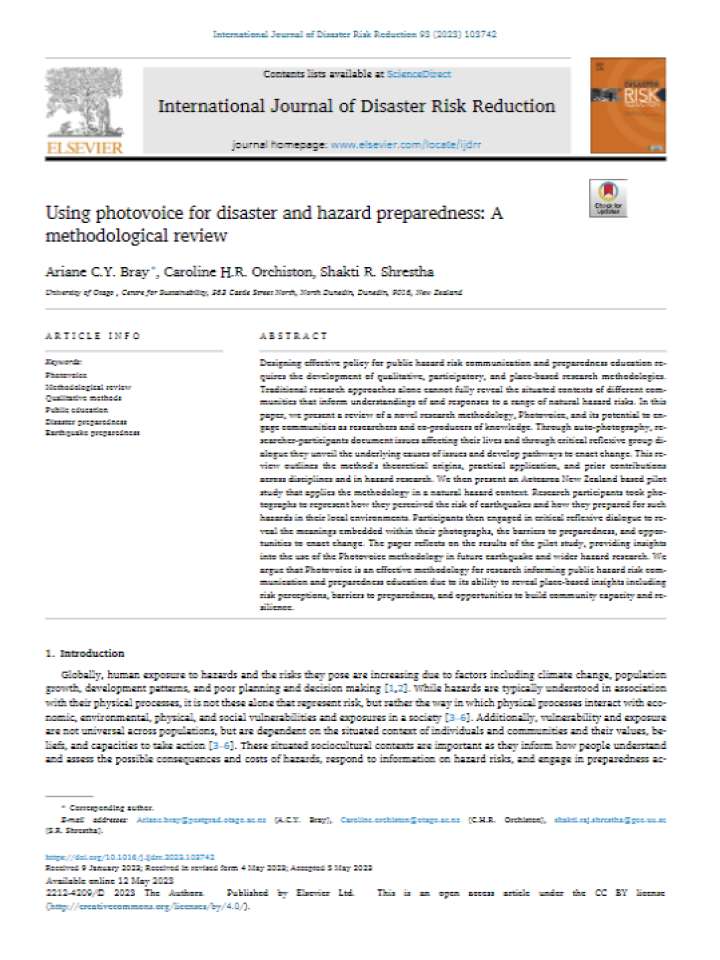Using photovoice for disaster and hazard preparedness: A methodological review
This paper presents a review of a novel research methodology, Photovoice, and its potential to engage communities as researchers and co-producers of knowledge. Designing effective policy for public hazard risk communication and preparedness education requires the development of qualitative, participatory, and place-based research methodologies. Traditional research approaches alone cannot fully reveal the situated contexts of different communities that inform understandings of and responses to a range of natural hazard risks. Through auto-photography, researcher-participants document issues affecting their lives and through critical reflexive group dialogue they unveil the underlying causes of issues and develop pathways to enact change. This review outlines the method's theoretical origins, practical application, and prior contributions across disciplines and in hazard research. The researchers then present an Aotearoa New Zealand based pilot study that applies the methodology in a natural hazard context. Research participants took photographs to represent how they perceived the risk of earthquakes and how they prepared for such hazards in their local environments. Participants then engaged in critical reflexive dialogue to reveal the meanings embedded within their photographs, the barriers to preparedness, and opportunities to enact change.
The paper reflects on the results of the pilot study, providing insights into the use of the Photovoice methodology in future earthquake and wider hazard research. We argue that Photovoice is an effective methodology for research informing public hazard risk communication and preparedness education due to its ability to reveal place-based insights including risk perceptions, barriers to preparedness, and opportunities to build community capacity and resilience.
Explore further
